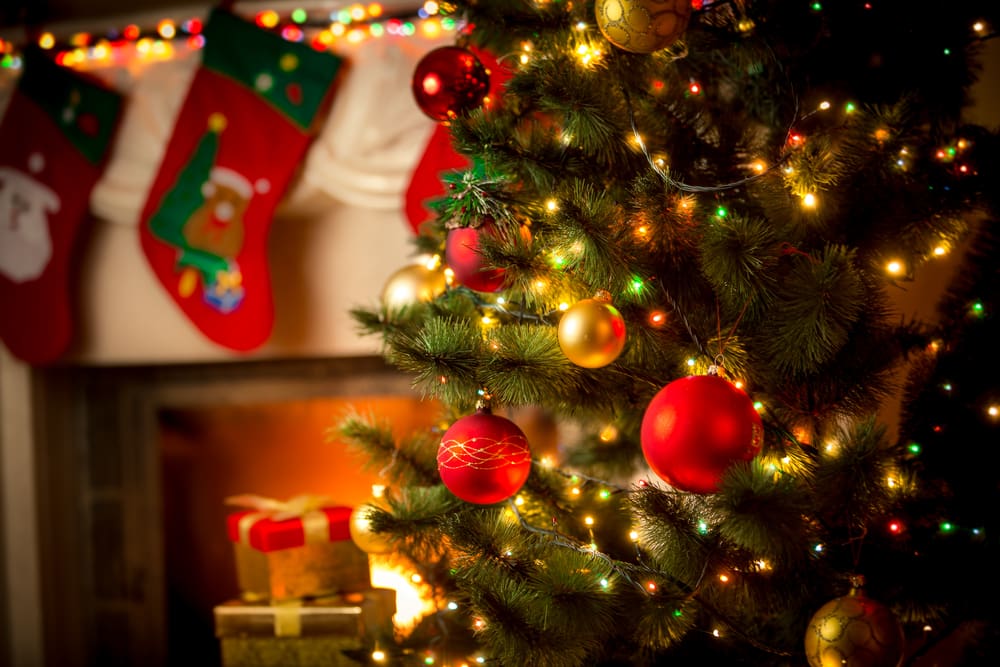
As the lights twinkle brightly, the trees stand proudly, and decorations fill every nook and cranny, it’s easy to see why Christmas is the most wonderful time of the year!
However, all things merry and bright must come to an end eventually… but when exactly? As we creep into the new year, many ponder the age question of when to take down our Christmas tree and decorations.
Of course, there’s no one-size-fits-all answer; it can vary depending on tradition, superstition, or simply what works for you. In this guide, we explore some of the most popular dates for taking your tree down and dive into the traditions behind them. Plus, we’ll share our expert tips for making the post-holiday wrap-up a piece of Christmas cake!
When should I take my Christmas tree down?
Whilst some are excited to pack up and enjoy some R&R after the holidays, some try to extend the season by putting off the job of taking down the tree for as long as possible.
Luckily, there’s no Christmas police, the power is in your hands! However, here are some traditional times to take down your tree and decorations:
Twelfth Night
Traditionally, Christmas trees and decorations are taken down on Twelfth Night, which marks the end of the Twelve Days of Christmas. Twelfth Night is generally celebrated on the evening of the 5th of January.
Twelfth Night is rooted in Christian tradition. It commemorates the eve of the arrival of the Three Wise Men and the end of the Christmas festivities. Many believe leaving decorations up past this date is unlucky!
If you’re a stickler for tradition, Twelfth Night might be the time to take down your tree and decorations.
New Year’s Day
New Year, new you? If you’re one for turning over a new leaf come the 1st of January, taking down the decorations can help to symbolise a fresh start.
With the Christmas break being over for many nine-to-fivers just days later, New Year’s Day is a convenient time to wrap the Christmas decorations up. It’s also when real trees might start to wither and shed pine needles, so taking it down early can save you that extra cleanup job.
Candlemas
If you’re crazy about Christmas and just can’t bear to say goodbye, fear not! Candlemas falls a whole 40 days after Christmas, meaning you could leave the halls decked right through till the 2nd of February!
Traditionally celebrated in some Christian communities across Europe, Candlemas marks the presentation of Jesus at the temple and is seen by some believers as the true end of the Christmas season.
Candlemas might be the perfect excuse to extend the holiday cheer, especially if you have an artificial tree that’ll thrive right through. Just be prepared for a few raised eyebrows if friends or family notice your decorations are still up in February!
Other dates to take your Christmas tree down
Late December
Some choose to take their decorations down in late December, even as early as Boxing Day! The name Boxing Day comes from the custom of the wealthy boxing up gifts and leftover food for their servants on the day after Christmas. However, some people now view it as a day for boxing up the tree and decorations.
Some may leave their decorations up through to the final day of December, then take them down before January begins to start the new year with a clean slate.
Epiphany
Epiphany, also known as Three Kings’ Day, falls on the 6th of January. This day Commemorates Jesus' baptism and is often seen as the true last day of Christmas. Epiphany holds great significance for those who celebrate it, primarily in cultures across Europe and Latin America. As a result, they view it as the most fitting time to take down decorations and trees.
When do most people take their Christmas trees down?
Still unsure when you should take your Christmas tree down? Let us shed some Christmas light on when other Britons choose to take their decorations down!
A YouGov survey found that New Year's Day is the most popular date for removing Christmas trees and decorations. Nearly 40% of Brits choose to tidy up on the 1st of January, bringing in the New Year with a fresh start.
For those who hold to tradition, the 5th or 6th of January is the next most common choice, with about 14% of people waiting until this day to observe the end of the Twelve Days of Christmas. Meanwhile, a slightly smaller portion—around 12%—stretch the festive season until Epiphany (6 January), especially in households that celebrate this Christian holiday.
The survey also found that about 8% of people are ready to clear out Christmas almost immediately, packing away decorations on Boxing Day - what Grinches!
Only a few seek to keep the Christmas spirit alive for longer, with just 5% of those surveyed waiting until later in January to take down their decorations.
Whether you follow the crowd with New Year’s Day, stick to tradition with Twelfth Night, or keep your decorations up for an extra month, you won’t be alone!
Top tips for taking your Christmas decorations down
Taking down the decorations may not be as exciting as putting them up. However, a little extra effort and some thoughtful planning will make next year’s decorating much quicker and easier!
Here are some top tips for taking down your Christmas tree and decorations:
1 - Inspect and repair decorations as you go
Before you pack everything away, give each decoration a quick once-over. Check for any damaged ornaments, broken bulbs, or faulty foliage. Repairing damaged items can save you trouble during the Christmas panic next year. Plus, it’ll be cheaper to replace decorations during January sales.
When you shop at Christmas Tree World, you’ll enjoy a 10-year guarantee on all foliage products and a one-year warranty on electrical goods. So, if you do notice a fault, don’t hesitate to get in touch with our helpful elves via the customer helpdesk!
2 - Disassemble and store your artificial tree properly
An artificial tree can last many years if maintained and stored properly. Clean your tree, carefully disassemble it, store it in a storage bag or its original packaging, and find it a cool, dry space for it to hibernate until next year.
For detailed storage instructions and expert tips, read our guide: How to Store Your Artificial Christmas Tree!
3 - Store decorations and lights carefully
Carelessly piling all your baubles and ornaments into one big box to be forgotten about until December can lead to breakages and missing items. Instead, try wrapping delicate decorations individually and using bauble storage boxes to organise and categorise ornaments and other accessories.
Christmas lights are notoriously tricky to deal with - fail to store them correctly and you’ll be dealing with a tangled mess next year! But did you know that Pringles cans, wrapping paper tubes, and clothes hangers can all be used to store fairy lights neatly and efficiently? Read our guide, How to Store Christmas Lights, to find out how!
4 - Recycle real trees and unwanted decorations
If you've read our Counting Christmas post, you'll know that the holidays are a time of increased waste. To do your bit, consider donating unwanted decorations to local charities, passing them down to a family member, or recycling broken decorations.
Real trees can often be recycled—many councils offer collection services or designated drop-off points for tree recycling in January. This is one idea for a sustainable Christmas. However, opting for an artificial tree that is reusable for about 10 years is a true eco-warrior move!
5 - Get a little helper involved
Packing up can be a fun family activity if you get a little helper or two involved. Kids can help wrap ornaments and sort decorations. With some festive tunes playing, you can turn the cleanup operation into a last dance for the holidays.
Find trees and decorations you’ll never want to take down at Christmas Tree World!
Here at Christmas Tree World, we offer an unbeatable range of artificial trees that look just like the real thing and won’t begin to wither before the season is over. From ultra-realistic trees to half trees, pre-lit trees, and snowy trees, our products look so good you’ll wish they could stay up all year round!
And that’s not all! Find Christmas lights in every shade, decorations large and small, and outdoor products for your garden wonderland, all on our website.
If you wish it could be Christmas every day, you’re in the right place! Our elves work all year round to guarantee a magical shopping experience, so don’t hesitate to reach out via the customer helpdesk.
What are you waiting for? Shop today for speedy delivery to all mainland UK postcodes!










